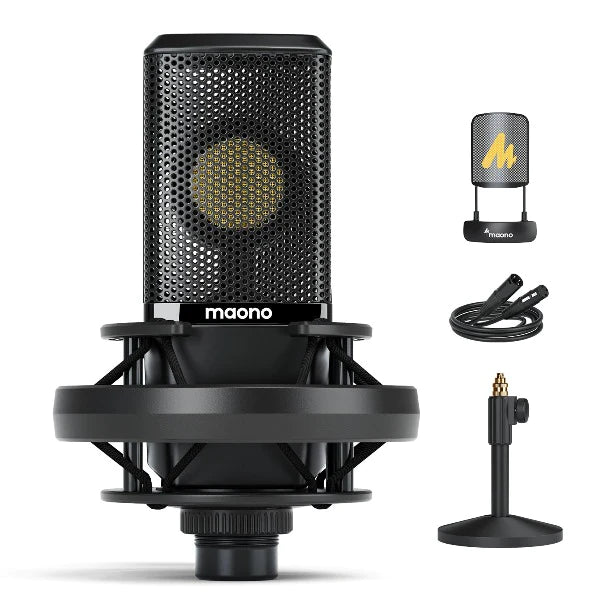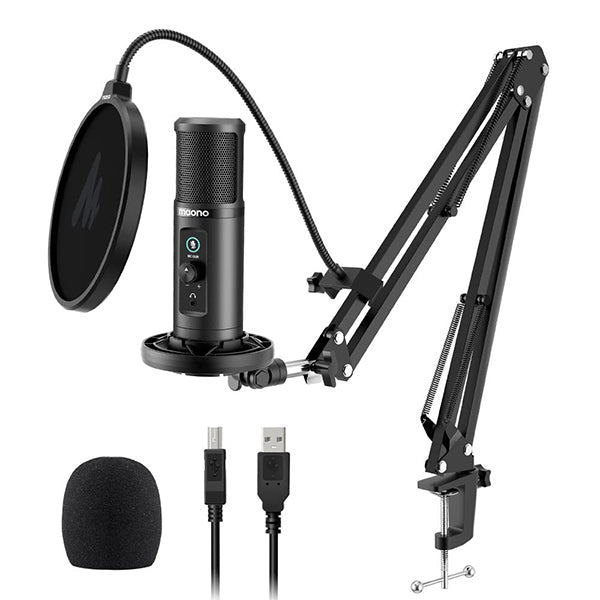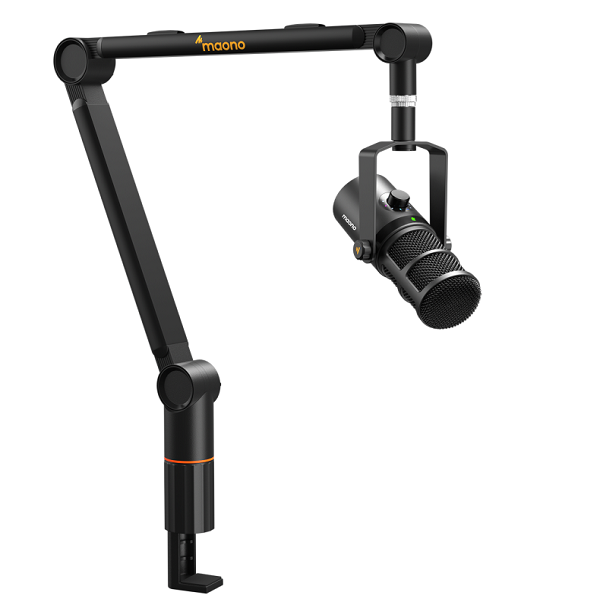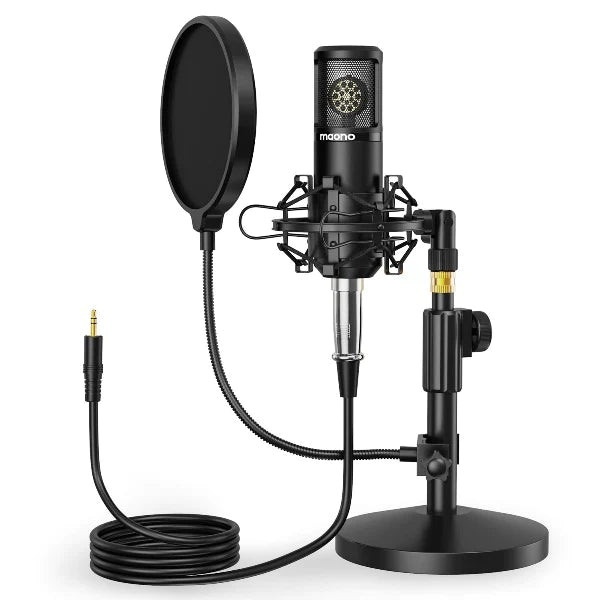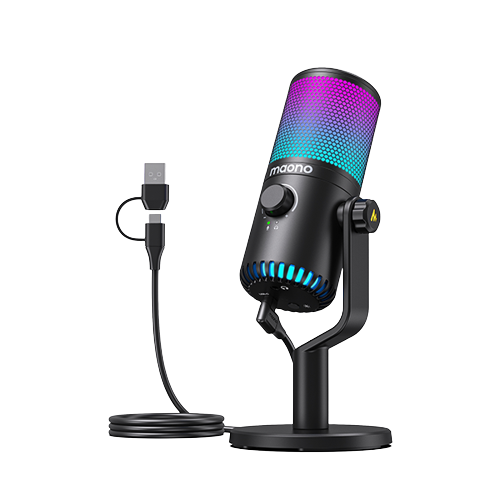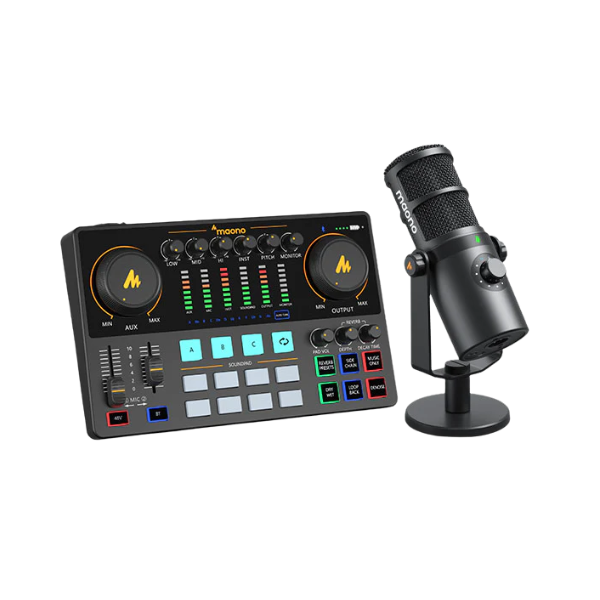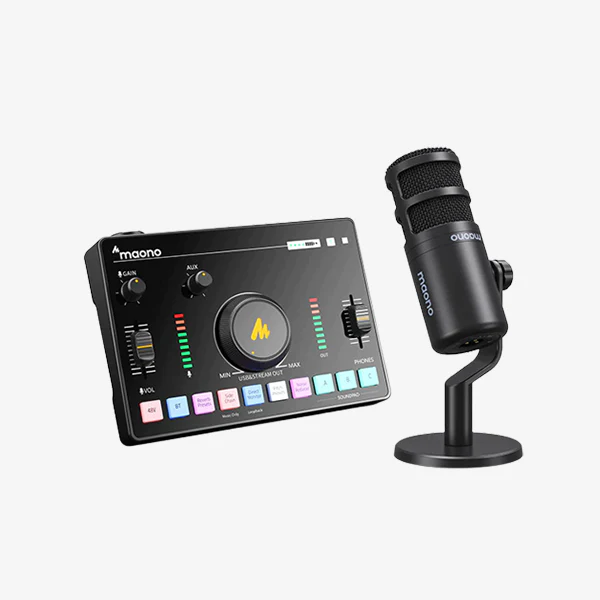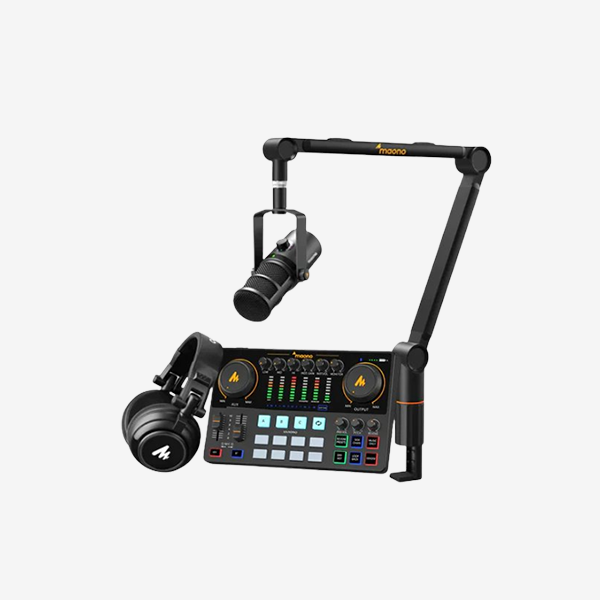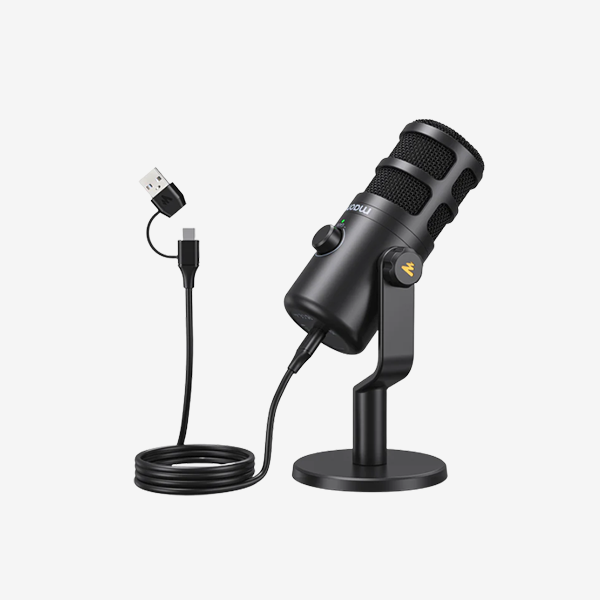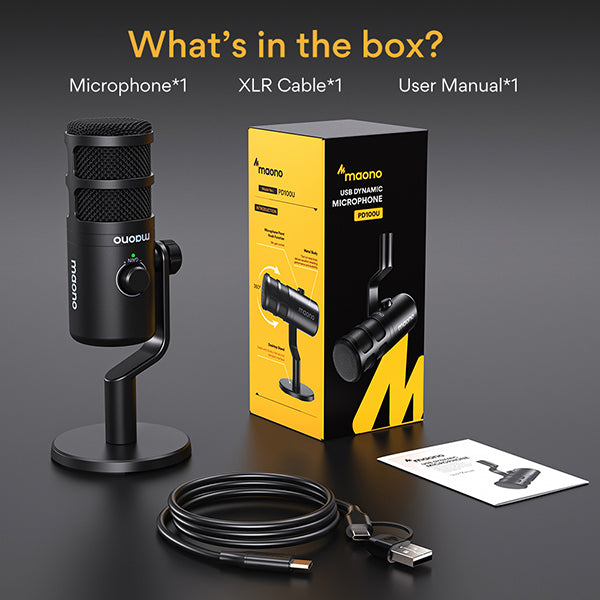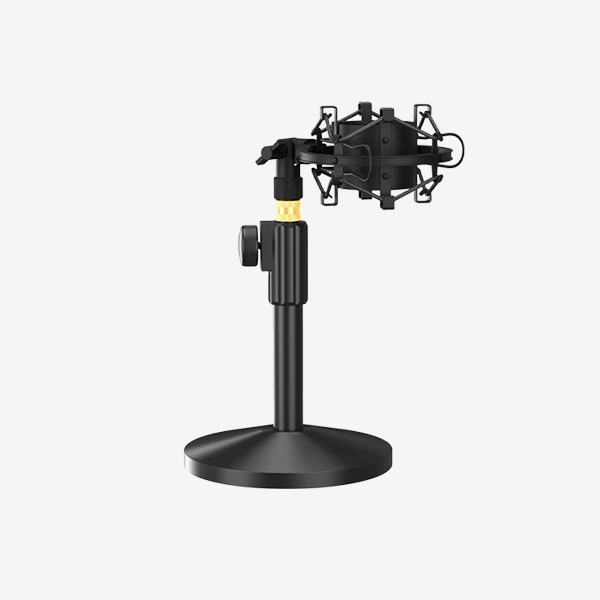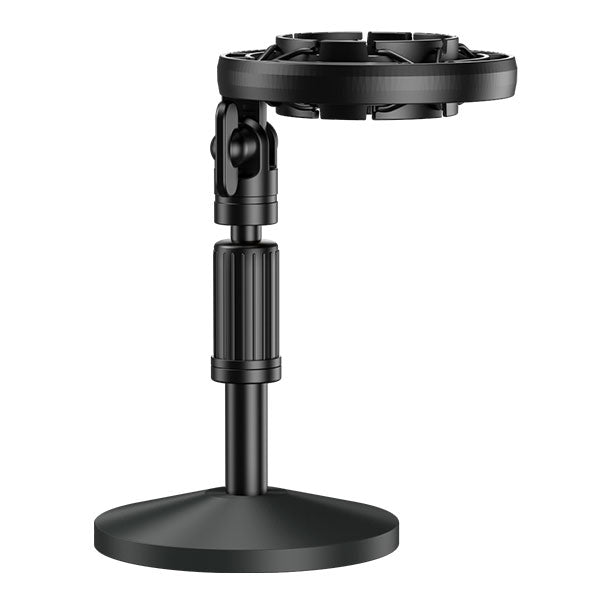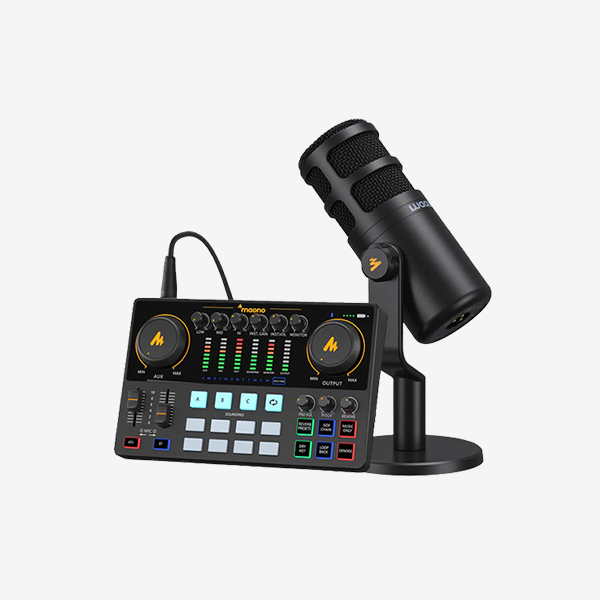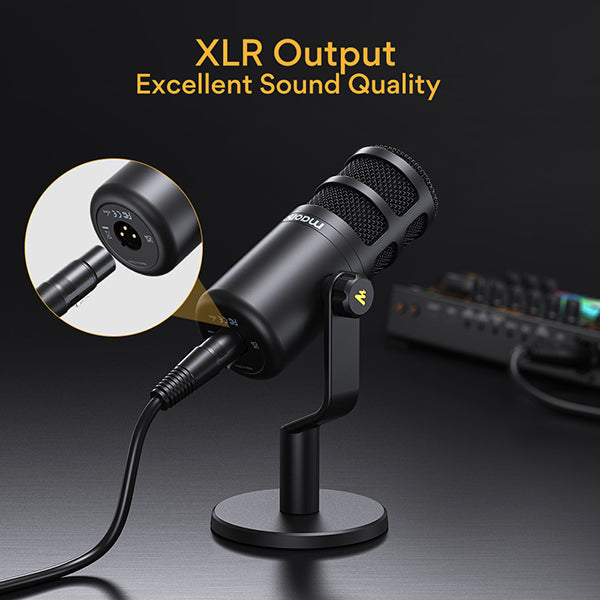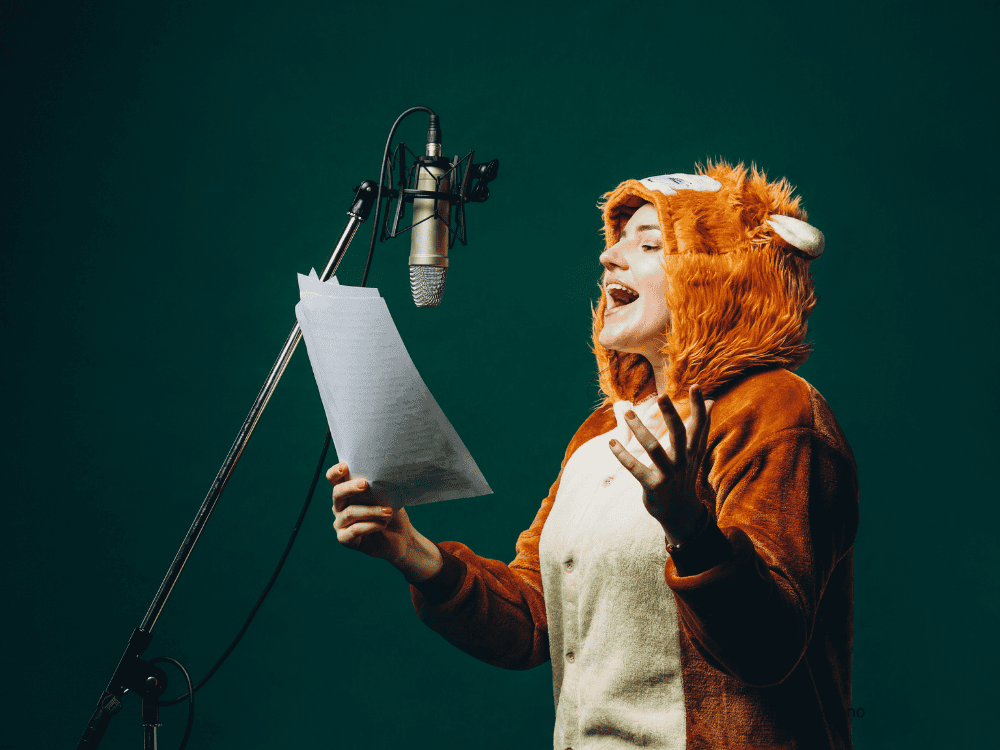Introduction to Podcasting Microphones
As the world of podcasting continues to grow in popularity, it has become increasingly important to invest in high-quality equipment to ensure a professional and engaging listening experience. One of the most crucial components of any podcast setup is the microphone. A good microphone for recording podcasts can make a world of difference in the sound quality of your recordings, allowing your voice to shine and your message to be heard loud and clear.

Importance of Choosing the Right Podcasting Microphone
When it comes to podcasting, sound quality is everything. Listeners expect clear and crisp audio that is easy on the ears. Choosing the right podcasting microphone is essential to achieve this level of quality. A poor-quality microphone can result in muffled or distorted sound, making it difficult for your audience to fully engage with your content.
Investing in a high-quality podcasting microphone not only enhances the listening experience for your audience but also reflects your professionalism as a podcaster. Clear audio will help you stand out from the competition and create a loyal fan base that keeps coming back for more.
Factors to Consider When Selecting a Podcasting Microphone
Before diving into the top 10 podcasting microphone recommendations for 2024, it's important to understand the key factors to consider when making your selection. Here are a few things to keep in mind:
Ⅰ. Microphone Type
There are various types of microphones available for podcasting, including dynamic, condenser, and ribbon microphones. Each type has its strengths and weaknesses, so it's important to choose one that suits your specific needs. Dynamic microphones are typically more durable and resistant to handling noise, while condenser microphones offer a wider frequency response and greater sensitivity.
Ⅱ. Polar Pattern
The polar pattern of a microphone determines how it picks up sound from different directions. The most common polar patterns for podcasting are cardioid and super cardioid, which focus on capturing sound from the front and rejecting noise from the sides and rear. Consider the environment in which you'll be recording and choose a microphone with the appropriate polar pattern to minimize unwanted background noise.
Ⅲ. Connectivity Options
Consider the connectivity options available with the podcasting microphone. USB microphones are convenient and easy to use, as they can be directly connected to your computer without the need for additional audio interfaces. XLR microphones, on the other hand, require an audio interface but offer greater flexibility and compatibility with professional recording setups.
What are the Specific Microphone Qualities that Makes a Good Microphone for Recording Podcasts?
When choosing a good microphone for recording podcasts, three specific qualities stand out: clarity, durability, and noise isolation. Here’s why each is essential:
Clarity
Clarity refers to how well the microphone captures sound, ensuring that every word is crisp and intelligible. For podcasts, where clear communication is key, a microphone that excels in clarity will minimize muddiness and distortion, allowing listeners to engage fully with the content. A clear recording enhances the overall listening experience, making it easier for the audience to follow discussions and narratives without straining to understand.
Durability
Durability is crucial for podcasters who may be transporting their gear frequently or using it in various environments. A durable microphone can withstand the rigors of travel and the wear and tear of regular use, ensuring it maintains its performance over time. Investing in a microphone that is built to last means fewer replacements and repairs, ultimately saving money and ensuring consistent audio quality for every recording session.
Noise Isolation
Noise isolation is the ability of a microphone to reject background noise, focusing on the sound source (usually the speaker’s voice). This quality is vital for podcasts, as recording environments can vary from quiet studios to bustling cafes. A microphone with good noise isolation capabilities helps reduce unwanted ambient sounds, such as traffic, chatter, or mechanical hums, ensuring that the podcast content remains the focal point. This leads to a more professional-sounding product and enhances listener satisfaction.
A good microphone for recording podcasts should provide clarity for crisp audio, durability for long-term use, and noise isolation to create a focused and professional sound. These qualities collectively enhance the quality of the podcast, making it more enjoyable for the audience.
Top 10 Podcasting Microphone Recommendations for 2024
Now that we've covered the important factors to consider, let's dive into the top 10 podcasting microphone recommendations for 2024. These microphones have been carefully selected based on their sound quality, durability, and popularity among podcasters:
Ⅰ. Shure MV7( Price about $249)
The Shure MV7 is a professional-quality USB dynamic microphone ideal for close mic applications requiring sound clarity and a balanced tone. The beautiful and durable all-metal design features an adjustable stand that mounts to a variety of microphone stands, providing flexible placement options.
Ⅱ. Shure SM7B ( Price about $399)
SM7(B) is most commonly used for vocals. They're pretty common in radio, live streaming, and any other type of broadcast audio. In music recording studios, engineers have successfully used affordable dynamic microphones on instruments and vocalists. The SM57, 58, and SM7B all share some DNA, but the latter is optimized in different ways: the SM7B diaphragm is slightly different and optimized for enhanced low-frequency response; the SM7B's larger housing allows for a larger disc behind the cartridge. rear volume, thereby extending its low-end response.
The price of Shure's microphone is relatively high and may not be suitable for most beginners. If you have already been in podcasting for a few years and have enough budget, this is an ideal choice for most users.
Ⅲ. Maono PD400X (Price about $149.99)
Maono PD400X is a USB & XLR dual-mode dynamic microphone that offers excellent noise rejection and a warm, rich sound. specially designed for online podcasting, it is wide-compatible with Windows, macOS, iOS, and Android OS, and you can record on computers, mobile phones, and tablets. most of the users have been impressed by its sound quality since its release. Paired with the 360-degree rotatable $79.99 BA90 microphone boom arm, it is the best match for friends who just begun with their podcast studio.
For those who don’t have enough budget to buy a Shure microphone, the PD400X is a relatively affordable alternative microphone. Based on the price of about $100 buying a microphone that comes with the same clean sound quality as Shure, why not give it a try?
If the PD400X the Shure MV7 Killer? You might be interested in taking a check of this video
Ⅳ. Microphone Yeti ( Price about $98)
As A favorite microphone among streamers and YouTubers, you've probably seen the Blue Yeti in use on your favorite YouTubers and Twitch streams, where it delivers rich, powerful audio quality. While the Yeti is now part of the Logitech for Creators brand, it's still a great microphone and the best choice for most people. Blue Yeti offers bidirectional, omnidirectional, and stereo recording modes. These can provide some extra flexibility in your podcast format.
Ⅴ. Rode NT-USB Microphone ( Price about $169)
This set-and-forget desktop option from mic specialists Rode is an ideal choice for podcasting. Whether you're recording to a PC or an iPad, the NT-USB is incredibly easy to use. We particularly like the volume and clarity of the built-in headphone amp. Comes with a pop shield and 6 6-metre USB cable.
Ⅵ. Rode Procaster ( Price about $299)
This microphone is designed for recording, and more specifically for speaking. It's positioned as a broadcast microphone, which means it can be used in television, radio, or other high-voltage situations and does an excellent job of handling ambient noise.
Ⅶ. Hyper X Quadcast S ( Price about $159)
The HyperX QuadCast S is a sleek, clear-sounding USB gaming microphone with a mesmerizing light show. While its lack of portability and subpar internal pop filter detract a bit from its value, it is overall a very good microphone that comes with a two-year defective warranty.
Ⅷ. Elgato Wave ( Price about $149 )
Elgato Wave is a premium microphone and digital mixing solution that fuses plug-and-play convenience with broadcast-grade circuitry. is it one of the best podcasting microphones? For starters, it’s a very good-sounding cardioid mic, with an almost retro look that fits in well with any studio space.
Ⅸ.Razer Seiren X ( Price about $95.60)
The Razer siren x is the microphone designed specially to elevate the quality of streams. The microphone strategically filters unwanted background noise. It is the perfect microphone for anyone who wants to be a real streamer. Its super-cardioid recording pattern reduces background noise and the built-in shock absorber helps dampen vibrations, making it the perfect choice for anyone who wants to be heard loud and clear.
Ⅹ.Maono PM422( Price about $79.99)
Maono’s all-in-one microphone PM422 USB microphone is also widely recommended by users. It offers plug-and-play functionality and delivers professional-quality sound without the need for additional equipment. With a cardioid polar pattern, captures sound sources that are directly in front of the mic without any unwanted background noise. The price of PM422 is about $79.99, it is relatively the best USB podcasting microphone worth the price. " This is an easy purchase to recommend and is honestly the best bang-for-buck desktop mic I've ever come across," PETE said.
Comparison of the Top 10 Podcasting Microphones
To help you make an informed decision, let's compare the top podcasting microphones based on their key features and specifications:
|
Microphone |
Type |
Polar Pattern |
Connectivity |
Price |
|
Shure MV7 |
Dynamic |
Unidirectional |
USB&XLR |
$249 |
|
Shure SM7B |
Dynamic |
Unidirectional |
XLR |
$399 |
|
Maono PD400X |
Dynamic |
Cardioid |
USB&XLR |
$149 |
|
Yeti |
Condenser |
Unidirectional |
USB |
$98 |
|
Rode NT-USB |
Condenser |
Unidirectional |
USB |
$169 |
|
Rode Procaster |
Dynamic |
Unidirectional |
USB |
$299 |
|
Hyper X Quadcast S |
Condenser |
Cardioid, Bidirectional, Omnidirectional and Stereo |
USB |
$159 |
|
Elgato Wave |
Condenser |
Unidirectional |
USB |
$149 |
|
Razer Seiren X |
Condenser |
Cardioid |
USB |
$95 |
|
PM422 |
Condenser |
Cardioid |
USB |
$79 |
Consider your specific needs, budget, and recording environment when comparing these microphones to find the perfect fit for your podcasting setup.
Tips for Optimizing Sound Quality with Your Podcasting Microphone
Once you've chosen the right podcasting microphone, it's important to optimize your sound quality to ensure crystal-clear recordings. Here are a few tips to help you get the best results:
Find the ideal microphone placement: Experiment with the distance and angle between your mouth and the microphone to find the sweet spot that captures your voice accurately without picking up excessive background noise.
Use a pop filter: A pop filter helps reduce plosive sounds (such as "p" and "b" sounds) that can cause distortion. It is a simple accessory that can greatly improve the clarity of your recordings.
Control your recording environment: Minimize background noise by choosing a quiet location for your recordings. Consider using soundproofing materials or recording during times when ambient noise is at a minimum.
Monitor your audio levels: Keep an eye on your audio levels to ensure you're not recording too loud or too soft. Aim for a consistent level that is neither too quiet nor distorted.
Budget-Friendly Podcasting Microphone Options
Not everyone has a large budget to invest in high-end podcasting microphones. Thankfully, there are budget-friendly options available that still deliver impressive sound quality. Here are a few recommendations:
Ⅰ. PD200X USB & XLR Microphone ( Price about $79.99)
PD200X is a dual-mode RGB microphone that can freely switch between live broadcast and podcast modes, and its functions can be adjusted with their Maono link software. This microphone is available in black and white, with a unique appearance and good sound quality. AMC2 NEO can be used together to maximize its live-streaming effect. if you’re in the position of starting a new project, like a podcast or live stream, and want to level up your audio. there PD200X is your perfect choice with its budget price. It offers great sound quality and convenience, making it a popular choice among podcasters, who want to capture every subtle nuance of their voice and create a professional-sounding podcast.
Ⅱ.PD100 XLR Microphone ( Price about $49.99)
PD100X is an XLR interface dynamic microphone. The overall microphone design and port connection will be relatively simpler. The price of most microphones on the market that can be connected to sound cards is still relatively high, the PD100 will be more cost-effective for beginners to try. It is compatible with the sound card connection and the price is relatively lower, Because of the Built-in dynamic core and inner double-layer pop filter design, you can easily obtain the sound quality of the broadcast as well. It is a great choice for those who are just starting out or have limited funds to allocate to their podcasting setup.
Advanced Features to Consider in a Podcasting Microphone
If you're looking to take your podcasting setup to the next level, here are a few advanced features to consider when selecting a microphone:
Adjustable polar patterns: Some microphones offer the ability to switch between different polar patterns, allowing you to adapt to different recording situations and capture the sound you desire.
Built-in headphone monitoring: Microphones with built-in headphone monitoring capabilities allow you to listen to your recordings in real time, ensuring you're capturing the best sound possible.
Gain control: Having control over the gain of your microphone allows you to adjust the sensitivity, ensuring optimal audio levels and preventing distortion.
Multiple connectivity options: Consider a microphone that offers both USB and XLR connectivity options, giving you the flexibility to use it with different devices and recording setups.
Future Trends in Podcasting Microphones
The world of podcasting continues to evolve, and so do podcasting microphones. Here are a few future trends to keep an eye on:
Wireless technology: As technology advances, we can expect to see more wireless podcasting microphones that offer greater freedom of movement and flexibility in recording setups.
Smart features: With the rise of smart technology, we may see podcasting microphones with built-in voice assistants or other intelligent features that enhance the podcasting experience.
Enhanced noise cancellation: Background noise can be a challenge for podcasters, especially when recording in less-than-ideal environments. Future podcasting microphones may feature advanced noise cancellation technology to eliminate unwanted noise and improve sound quality.
Integration with virtual reality: Virtual reality is gaining traction in various industries, and podcasting may not be an exception. We may see podcasting microphones that are specifically designed for immersive audio experiences in virtual reality settings.
Conclusion: Choose the Best Podcasting Microphone for Crystal Clear Sound in 2024
Investing in a high-quality podcasting microphone is essential for creating a professional and engaging podcast. The top 10 podcasting microphone recommendations for 2024 mentioned in this guide offer a range of options to suit different needs and budgets. Whether you're a beginner or a seasoned podcaster, choosing the right microphone will ensure that your voice is heard loud and clear.
Remember to consider factors such as microphone type, polar pattern, and connectivity options when making your selection. Take advantage of the tips mentioned to optimize your sound quality, even if you're on a budget. And keep an eye on future trends in podcasting microphones to stay ahead of the game.
Choose the best podcasting microphone that suits your needs and start recording your crystal-clear podcast today! Start your podcasting journey with the right microphone. Explore our top 10 recommendations for 2024 and take your podcast to the next level.
To summarize the qualities of good microphones for recording podcasts:
- Clarity
- Ensures crisp and intelligible sound.
- Minimizes muddiness and distortion for better communication.
- Enhances the listening experience, making it easier for the audience to follow discussions.
- Durability
- Important for frequent transport and use in various environments.
- Withstands wear and tear, maintaining performance over time.
- Reduces the need for replacements and repairs, saving money.
- Noise Isolation
- Rejects background noise and focuses on the speaker’s voice.
- Essential for varied recording environments (e.g., studios, cafes).
- Helps reduce unwanted ambient sounds, leading to a more professional-sounding podcast.
A good microphone for recording podcasts should provide clarity, durability, and noise isolation, collectively enhancing the podcast's quality and listener enjoyment.
Podcasting Microphone FAQs:
1. What type of mic is best for podcasts? Is a dynamic better than a condenser microphone?
The choice of different types of microphones depends on the environment you are using. Most people will record at home, and they do not have the space or budget to pay for a soundproof room at home. In this case, it is generally recommended to choose a dynamic microphone, which will not absorb too much noise. If the sound isolation effect in your environment is relatively good, then a condenser microphone is also acceptable, but its sound collection quality is not as good as a dynamic microphone.
There is generally no so-called best choice, but you can judge whether it is the microphone you need based on the sound effect of the microphone.
2. Is USB or XLR better for podcasting?
In short, USB microphones are excellent plug-and-play microphones that sound great, are affordable, portable, and easy to use. XLR microphones will require more equipment to get started but offer more versatility with the option to upgrade the microphone and expand your setup as you need. If you record with three or more people or would like to connect with other podcasting equipment like an audio mixer, we recommend investing in XLR mics for more equipment options and maximum flexibility.
3. What equipment is needed for podcasting?
Here are some podcasting equipment checklists you can consider buying:
1. Microphone
2. Audio Mixer
3. Microphone Boom arm
4. Headphones
5. Popfilter
6. Portable Recorder
7. Audio Software






















